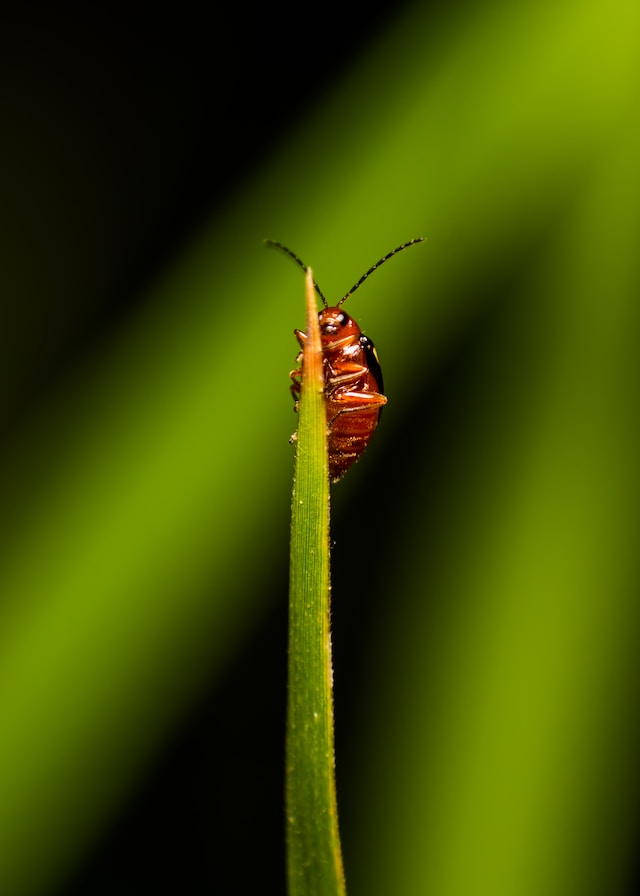Cockroaches: the resilient and infamous inhabitants that seem to thrive in the hidden corners of our homes, scurrying about with an uncanny knack for survival. As much as we associate these resilient pests with indoor spaces, there’s a lingering question: do cockroaches live outside? Let’s uncover the truth behind these notorious insects and their outdoor habitats.
Cockroach Habitats: Indoor vs. Outdoor
When we picture cockroaches, the immediate mental image often conjured is that of these pests scuttling across kitchen floors or seeking refuge in dark crevices indoors. However, the reality extends beyond the confines of our homes.
Cockroaches are incredibly adaptable creatures that thrive in various environments, including outdoor ones. While many species prefer indoor dwellings due to the accessibility of food, water, and shelter, they are not exclusive to indoor habitats.
Do Cockroaches Live Outside?
Contrary to popular belief, outdoor spaces also serve as suitable habitats for certain cockroach species. Gardens, garbage areas, woodpiles, and damp outdoor locations provide the ideal conditions for these insects to thrive and hide.
Most cockroaches aren’t picky about where they live. They’re incredibly adaptable creatures, quickly moving between indoor and outdoor areas based on available resources. This adaptability helps them thrive, making them a common sight in urban and rural environments.
Attractions of Outdoor Spaces for Cockroaches
Outdoor environments present an array of attractions for cockroaches, making these areas favorable for their habitation. One primary lure is the abundance of organic matter found outdoors.
Decomposing plant material, fallen fruits, and damp soil serve as an all-you-can-eat buffet for certain cockroach species. These environments provide ample sustenance, allowing cockroaches to thrive and reproduce.
Moreover, outdoor settings offer diverse hiding spots and nesting opportunities. From leaf litter to woodpiles, rock crevices, and garden debris, cockroaches find various secluded spots to seek shelter and breed.
These locations often provide the necessary warmth and moisture for their survival, enabling them to establish thriving populations in these outdoor niches.
Types of Cockroaches that Dwell Outside
So, do cockroaches live outside? Some species do!
Several cockroach species prefer the great outdoors as their natural habitat. Among them, the Oriental cockroach (Blatta orientalis) is a prominent example. This species thrives in damp, cool outdoor environments such as mulch, leaf litter, and sewers.
American cockroaches (Periplaneta americana) are another prevalent outdoor species commonly found in moist, warm areas like flower beds, drains, and beneath mulch.
Other species, such as the wood cockroach (Parcoblatta spp.), gravitate toward woodpiles and tree bark, while the field cockroach (Pseudomops septentrionalis) prefers grassy fields and gardens. These variations in habitat preference highlight the adaptability of cockroaches to diverse outdoor settings.
While cockroaches have a natural affinity for outdoor environments, they are also adept at infiltrating urban landscapes. The transition from natural outdoor habitats to urban areas occurs due to the availability of resources essential for their survival.
Within cities and suburban areas, cockroaches discover abundant food sources, moisture, and hiding places that mimic or even surpass those found in natural outdoor settings.
Crevices in buildings, garbage bins, sewers, and drainage systems become ideal shelters for these pests. Additionally, human activities inadvertently provide sustenance for cockroaches, as they opportunistically feed on food remnants, crumbs, and other organic matter in human habitats.
Factors Influencing Cockroach Habitation
Cockroaches’ adaptability to different natural or urban environments depends on several factors. They’re drawn to places with abundant food, water, and shelter, like areas with decaying matter or damp spots caused by leaky pipes. Temperature and humidity levels are also crucial.
Some species prefer warm, humid conditions, while others thrive in cooler, damp environments. Their knack for finding a balance in diverse settings enables them to survive and reproduce in various conditions.
Outdoor cockroaches have evolved survival strategies to thrive in their chosen habitats. Their nocturnal nature allows them to avoid predators and unfavorable environmental conditions during the day. Furthermore, their ability to consume various food sources and adapt to changing environments enables their persistence in outdoor spaces.
Understanding the factors influencing cockroach habitation in natural outdoor and urban environments sheds light on their remarkable adaptability. Whether dwelling in forests, grasslands, or urban centers, cockroaches exhibit a noteworthy resilience, contributing to their widespread presence across various landscapes.
Mitigating Cockroach Infestations
Controlling cockroach populations requires a multi-faceted approach that addresses their presence indoors and their potential impact on outdoor spaces. Implementing preventive measures and targeted treatments can help manage infestations effectively.
- Indoor Control: For indoor spaces, sealing cracks and crevices, fixing leaks, and maintaining cleanliness are fundamental preventive measures. Using baits, traps, and insecticides formulated explicitly for indoor use can help curb cockroach populations within homes, apartments, and commercial buildings.
- Outdoor Management: Outdoors, reducing potential harborage sites is essential. Regularly clearing yard debris, maintaining clean garbage areas, and minimizing access to standing water can deter cockroaches from establishing nests or foraging for food outside buildings.
- Integrated Pest Management (IPM): Employing an Integrated Pest Management approach combines various tactics, including sanitation, exclusion, and chemical control, to manage cockroach infestations effectively. This method emphasizes using multiple strategies to achieve long-term pest control while minimizing environmental impact.
- Professional Assistance: In severe infestations or situations where DIY methods prove ineffective, seeking the expertise of pest control professionals can be crucial. Pest management professionals can conduct thorough inspections, identify infestation sources, and effectively implement targeted treatments to address cockroach problems.
- Regular Monitoring: Monitoring indoor and outdoor spaces is crucial to detect and promptly address cockroach infestations. Early detection allows for swift action to prevent infestations from escalating.
Eliminating Cockroaches with USPS
The question “Do cockroaches live outside?” unravels a multifaceted reality: cockroaches exhibit adaptability that transcends boundaries between indoor and outdoor environments. While these resilient pests naturally thrive in outdoor habitats, they also adeptly infiltrate and survive in urban landscapes and human-made environments.
However, you don’t have to suffer with cockroaches on your property with us on your side! If you’re struggling with cockroaches indoors or outside, contact us today!

